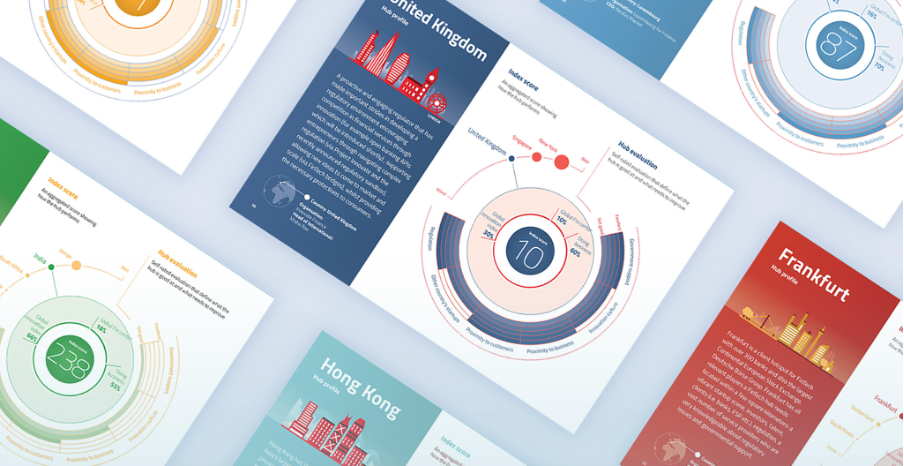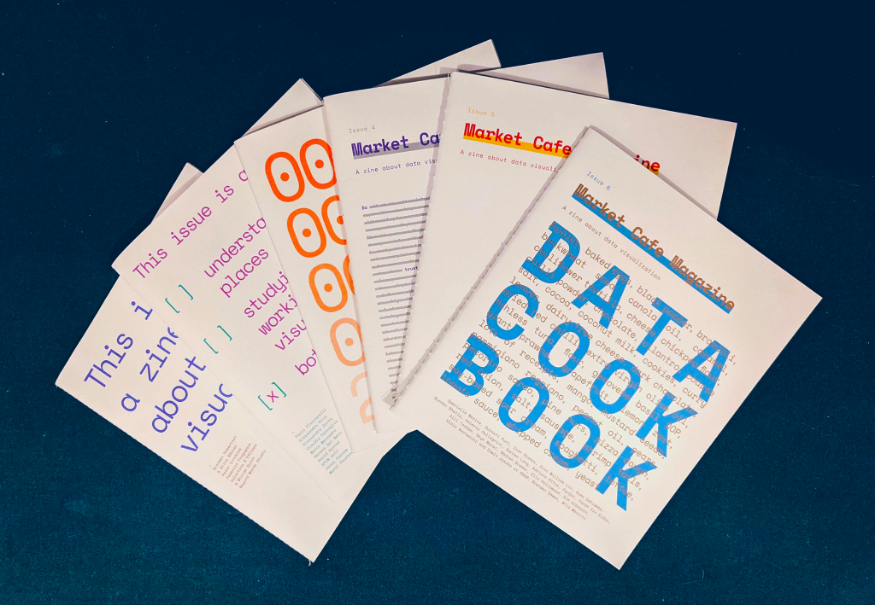Work that contributes to clarity and understanding
Interview with Piero Zagami - Data Visualization Designer
Amsterdam, 8 november 2022
Text and photo by Eric Haas
Piero (1982) is an award-winning information designer who enjoys turning information into visually compelling and meaningful stories in a wide range of sectors and media. With over a decade of experience working with prestigious design agencies, Piero has developed a unique approach to visualizing data. He currently works as an independent designer from his studio across London and Amsterdam.
See https://pierozagami.com/
Piero and I meet in the lobby of Hotel de Hallen, a cozy boutique hotel in the vivid and lively neighborhood of Amsterdam Oud-West. Piero (1982) is originally from Italy. He studied Politics at the LUISS, a private college in Rome from 2002 till 2006. Later he moved to London to study Visual Communication and Graphic Design at the London College of Communication, part of the University of Arts. At the start of the Corona Pandemic, he moved to Amsterdam. He lives here together with his girlfriend.
How did you become a data visualization designer?
I started off with my studies into Politics and took a bachelor and then a master's degree. But at the same time, in those years, I realized my studies did not lead to the type of work I wanted to do. I didn't want to become a politician or a journalist. In my free time I started experimenting with graphics software, and I was starting to realize I might be a visual communicator. I didn't know what kind. So I took an opportunity to go and study for a master’s degree in London. I loved studying graphic design so much that it just confirmed that I was doing the right thing. My graduation project was a project that was my first data visualization. I created a big poster visualizing documents produced by the United Nations. In this project I was really connecting my two passions to my studies: politics and graphic design. At that time my focus was unique.
How did your work focus evolve from there?
My focus to combine politics and graphic design has pretty much remained constant throughout my working life. I try to contribute to clear decision making by providing meaningful visualizations. I really love this blend of research towards finding truth, or at least some kind of objectivity. It forces you to study a certain subject deeply through the data. You need to understand the topic and the concept. If you cannot understand it, you cannot visualize it.
Does that come close to what you might call your personal and professional purpose or meaning of life?
Yes, I guess so. I think I can illuminate things as a subject; really shed light on a certain subject of excessive complexity and/or the lack of shared knowledge by the people that might read these pieces. This is why often this field is used a lot by magazines or newspapers, because it's a super useful tool to simplify, to break down complex topics. My work contributes to clarity and understanding and to hopefully better decision making. But the first goal always is to build knowledge. Second is decision making. It really motivates me to be able to help change certain behavior, or to highlight issues in certain topics.
Can you elaborate a bit in this by means of a concrete project where you have been involved in?
An example is a project I did in Uganda. It was a very delicate project in terms of the topic and the people involved. My role was the team leader of a small group of people, working for a non-governmental organization in Tanzania, advocating rights for LGBTQ people. In Tanzania, that is still a huge taboo. We had to do the work from Uganda, where at least we had the space to talk about this. I was in charge of the awareness campaign, which was completely built around emotions. We created user personas, fake characters, almost like a little story with illustrations that basically summarize the problem that certain people in Tanzania live with. We wanted to keep it very lighthearted, colorful, and positive, with just a little bit of graphics that people could use in social media. By sharing these images people were invited to share their personal experiences and stories in an anonymous way.

At the end we were able to collect data of hundreds of people, which has led to meaningful data that has been in use till date. It has also won an award. So I definitely think this project was very meaningful.
How would you describe your feeling towards this project? How do you look back on it?
I guess it makes me proud to have been able to help a little bit. We gave a minority that would otherwise be completely separated, the opportunity to reach out, feel connected and perhaps understood or even supported. The project probably has given them at least some hope and sense of connectedness.

How do you structure and manage your work?
My work consists of three big chunks:
I call the first category “retainer work”: freelance work for clients based on work contracts. This work allows me to pay the bills. From my capacity as a data designer, I join the team of for example editors and researchers of a certain editorial organization and provide the visualizations that they demand for.
The second category I call “portfolio pieces”. These are projects within my focus of interest. Things that I truly care for and believe in. This motivates me to go the extra mile and invest my own time and resources into the project, because I want it to be perfect. There still is a client and I still get paid upfront. At the moment for example I’m finishing a six-month project to visualize the outcomes of a highly interesting survey done by an English nonprofit organization, on the Middle Eastern population. The aim was to identify the views of the citizens of Middle Eastern countries like Lebanon, Iran, Iraq on issues like education, religion, politics and geopolitics. It's a large survey that led to an elaborate report that is quit hard to read. Therefore, I developed compelling, clear and beautiful visualizations, which we put together in an interactive website. As you scroll, you read the story and navigate through the data.

The third and last category contains my own projects. Projects without a client, entirely self-initiated. This category comprises autonomous work, like the magazine Market Cafe that we’ve been running for some years now. Autonomous projects are initiated and financed upfront by my fellow designer Tiziana Alocci and me. There's a lot of work behind the creative effort of putting this together: printing, warehousing, distributing, administration and management. Six years have taught us a lot from experience. For example, we now have a distributor that takes care of the warehouse and the distribution, which means we don't have to go to the post office. The first year we had to do it all ourselves.
At the moment I think I'm distributing my time for around 40% in the retainer, 40% in these portfolio pieces, and another 20% of my time for autonomous work. In other years this division was much different. In 2019 I decided for example to invest 100% of my time in an autonomous project. That took a heavy toll on my health and well-being. Now I have a more healthy distribution of work.

You mentioned the Market Cafe magazine. Why and how did you start it?
Titziana Alocci (my partner in crime) and I used to work for the same agency. We left that company kind of at the same time to become self-employed entrepreneurs. We realized we had a lot of common interests and shared the will to do something beyond regular work and projects. Data visualization was still pretty new in the industry back then. We wanted to play a role in defining and growing the field. That’s how the magazine got conceived. The magazine really opened a lot of doors for us.
What doors did it help to open?
The first was to become able to get to know and become friends with a lot of the contributors that we interviewed. They're all really nice people, very friendly and open to share what they do. We got to speak to them which would be less likely to happen if it wasn’t for the magazine. Designers sort of live on their own little islands. There's not much of a reason to get together and talk, if not for workshops and conferences. Every time that we've reached out, they're always thankful for inviting them and happy to jump on a call and tell us everything about their project.
So, it gave us this amazing network of connections and the chance to travel and explore. Like, I went to speak on conferences and events in Georgia, Germany and other places in Europe. Market cafe really opened a huge number of doors for us.
Further it has helped to build recognition. My work is definitely more known because of the magazine, because it actually ends up in a lot of people's houses. And those are the people that I would like to reach.
I’m interested in how you deal with problems and set-backs on your path. Problems always come with two sides: negative and positive. Although they cause pain they often are also gateways for change and (personal) evolution. Which problems did you encounter and how did you deal with them?
The first episode that shaped my life, I guess, was the break-up with my girlfriend back in Rome. Like all youngsters, I was quite emotional and insecure. I didn't have solid grounds about what I wanted to do in my future. When my relationship came to an end, I felt I lost the only thing that I really cared about deeply. It forced me to dig deeper inside myself; to that part of me that nobody can take away. Eventually the break-up motivated me to move to London, study visual communication and graphic design, and become a data designer. So there’s definitely been a silver lining in that break-up.
A second episode caused me to move to Amsterdam and redefine myself as a designer. In 2018 I took that break from work to spend one year on one single initiative, a design conference named Encode. This took a lot out of me. The conference took place in September 2019 with three days of workshops and lots of people on stage. The results were fantastic. It was a blast, but I was exhausted. So I realized this sort of work wasn't very sustainable. And as an entrepreneur, I felt that there was a failure there. I was dealing with the fact that the event itself was a success, but the business vision was not. I felt totally exhausted. It made me embrace the idea of moving to Amsterdam to join my girlfriend; take a break from a lot of things from busy, tiring, hectic London. I wanted to retreat a little bit. So I did, three years ago and got to stay until now.
Nowadays I am a different kind of designer. I make different choices. I have clearly set my purposes and developed myself into the designer I want to be. In the last few years in London with all these other initiatives, I was less of a designer and more of a kind of network person in the middle of a lot of different things. I decided not to pursue that. And the move to Amsterdam helped a great deal. I found a small workspace around the corner where I live. I love that space; it allows me to feel at home, focus and be connected at the same time.
Finally, would you have a wise lesson to share with the reader?
Laughs… “Punch lines I don't have. Fail a lot and fail early… This kind of Steve Jobs quotes? No, I don't have them. At the end of the day, perhaps it all doesn’t matter. Life is maybe to make decisions in the moment that you feel good about. So really, my advice would be to relax about the things around us, because we have no clue. Sometimes we have no clue as a species, not even as individuals. We think we know what's going to happen in ten years. But we don’t. So just live your life the way you feel is good and stay relaxed.
Eric Haas
Amsterdam, December 13th 2022
Sources and links:
Piero Zagami on Linkedin
Piero Zagami’s website and portfolio
